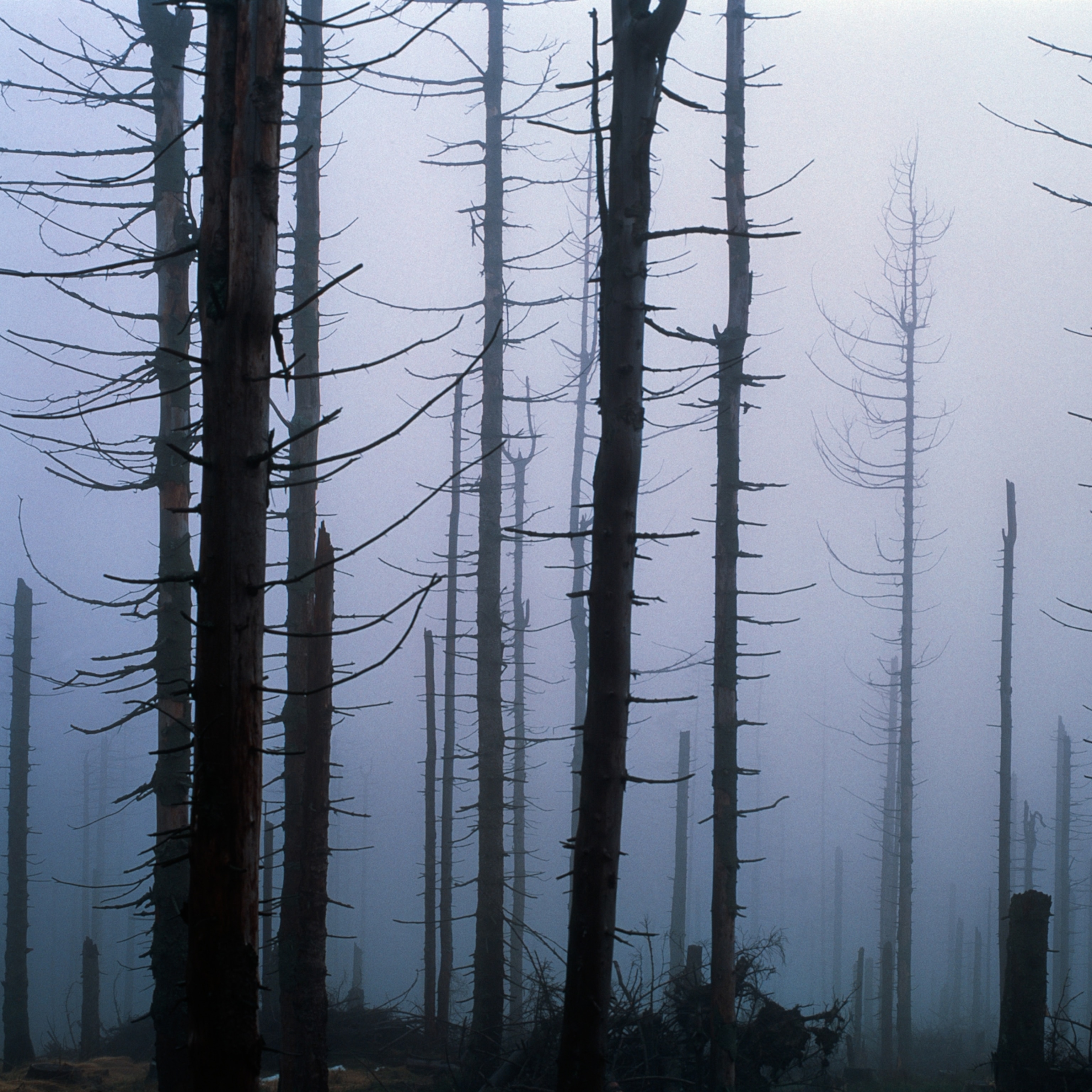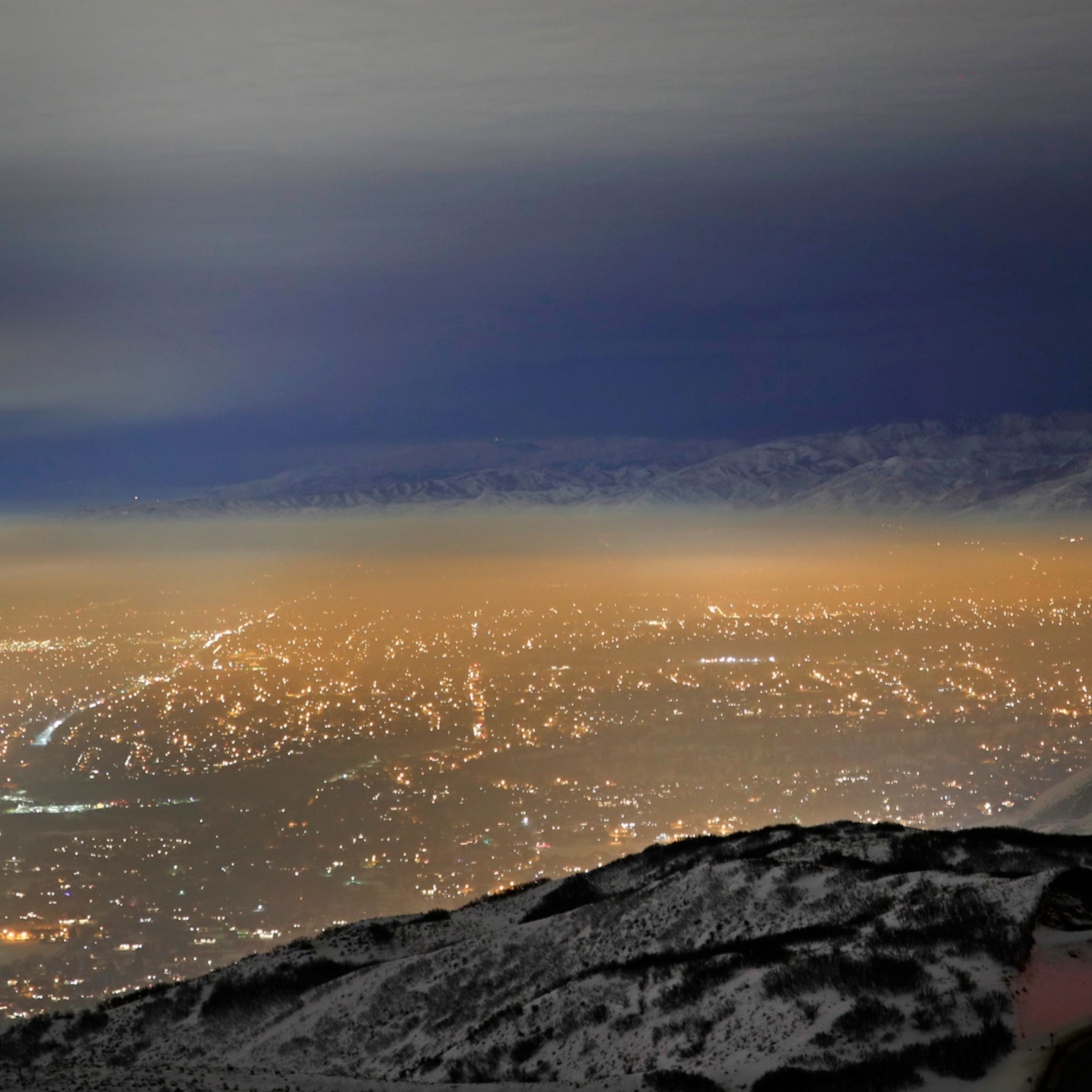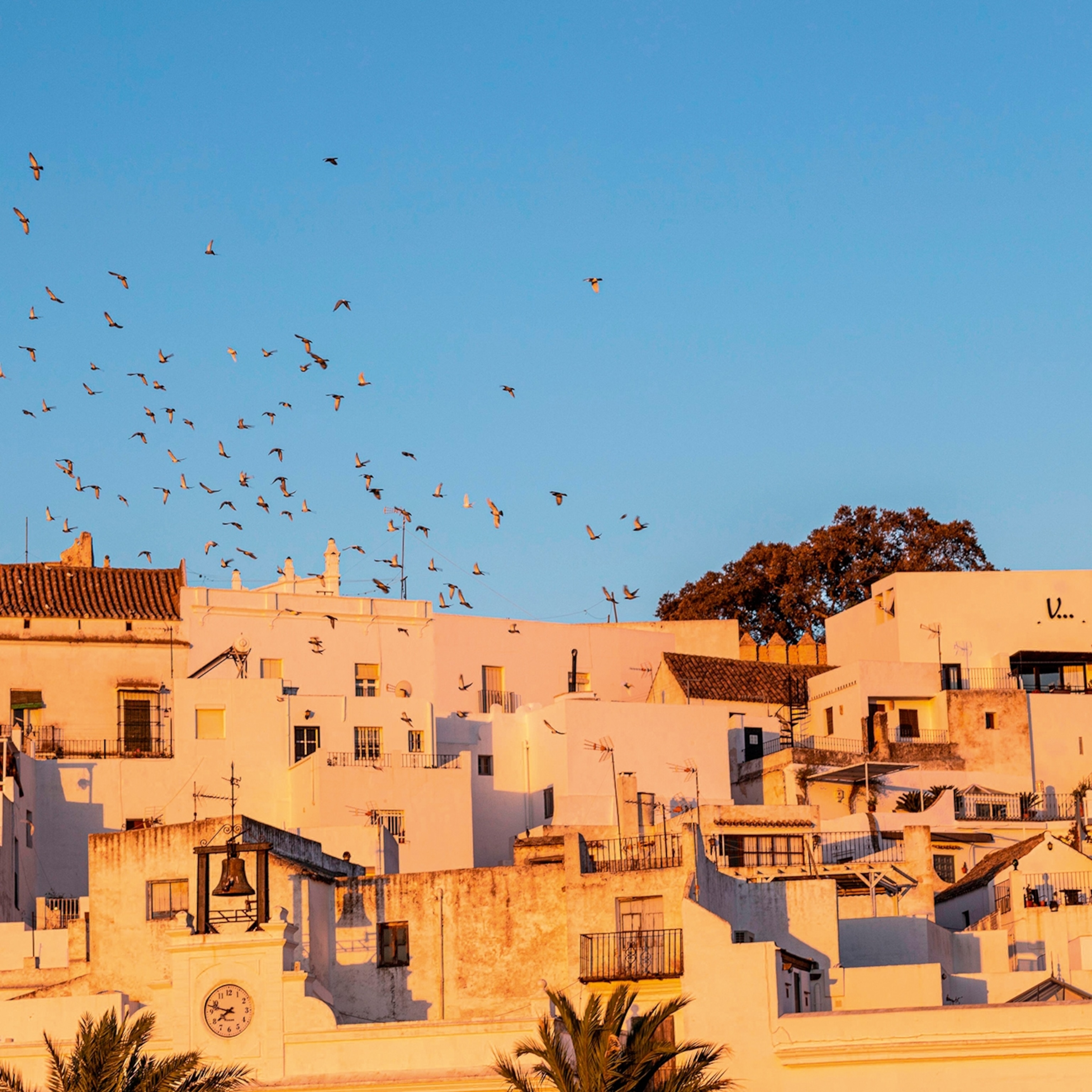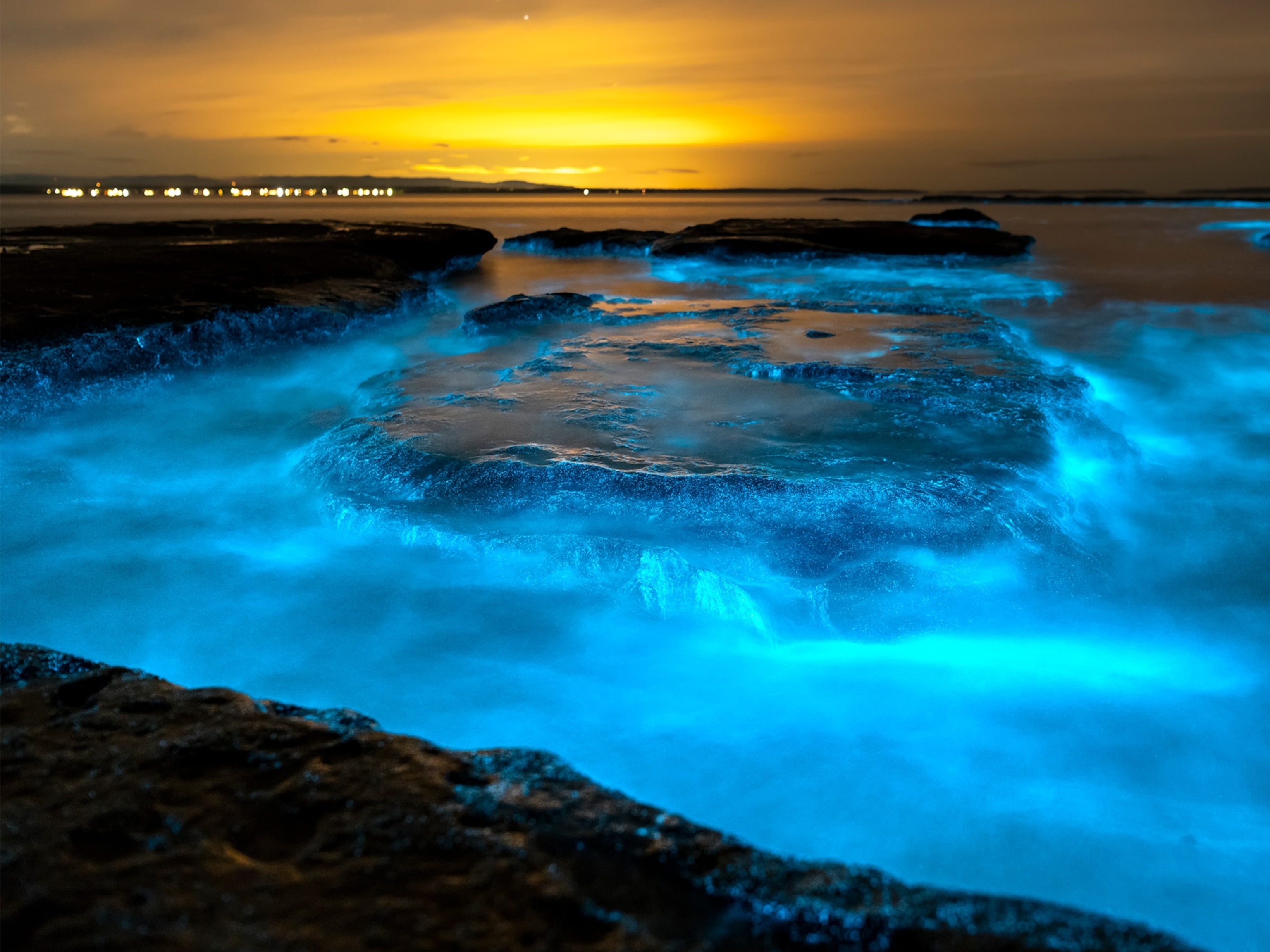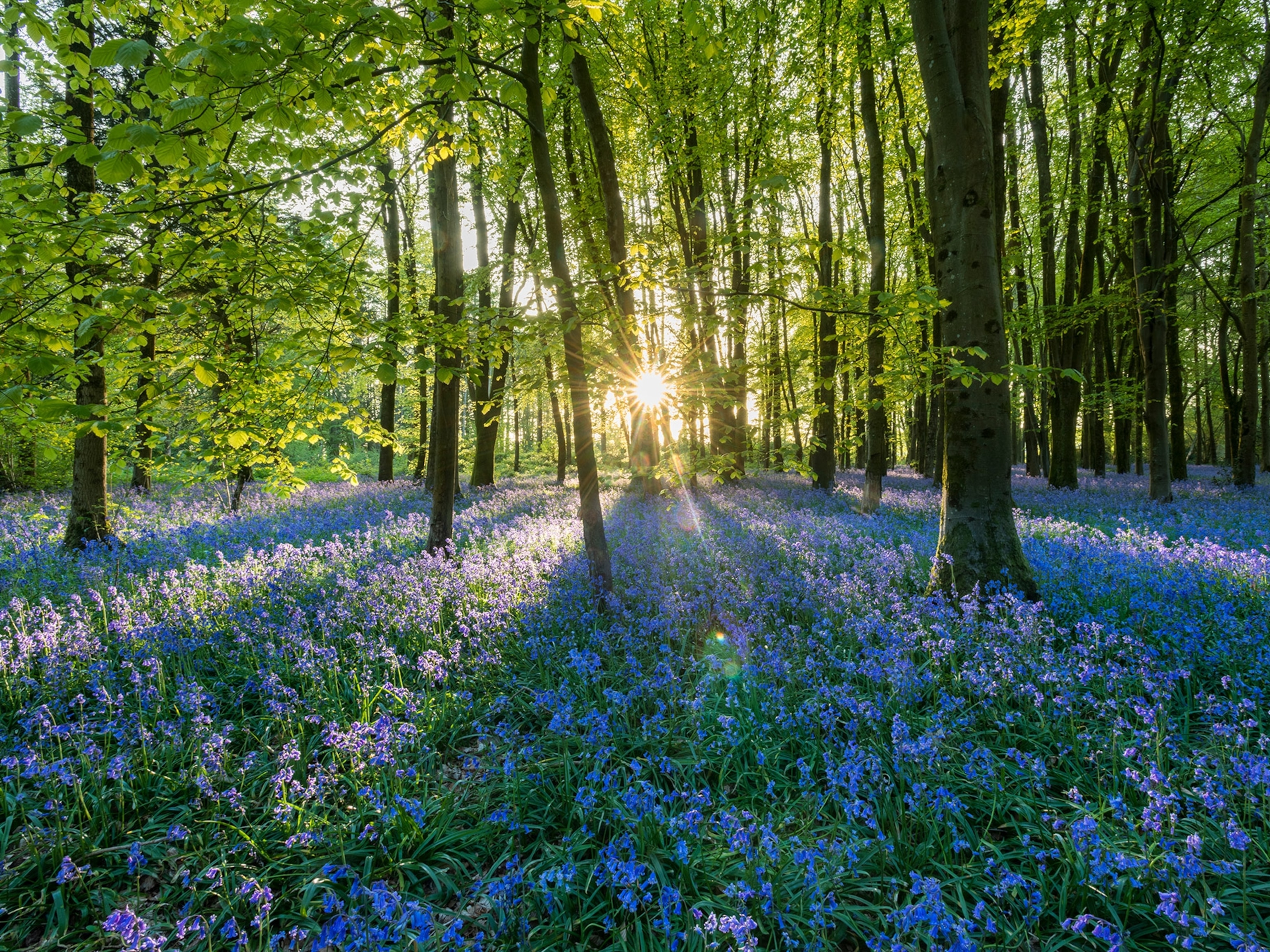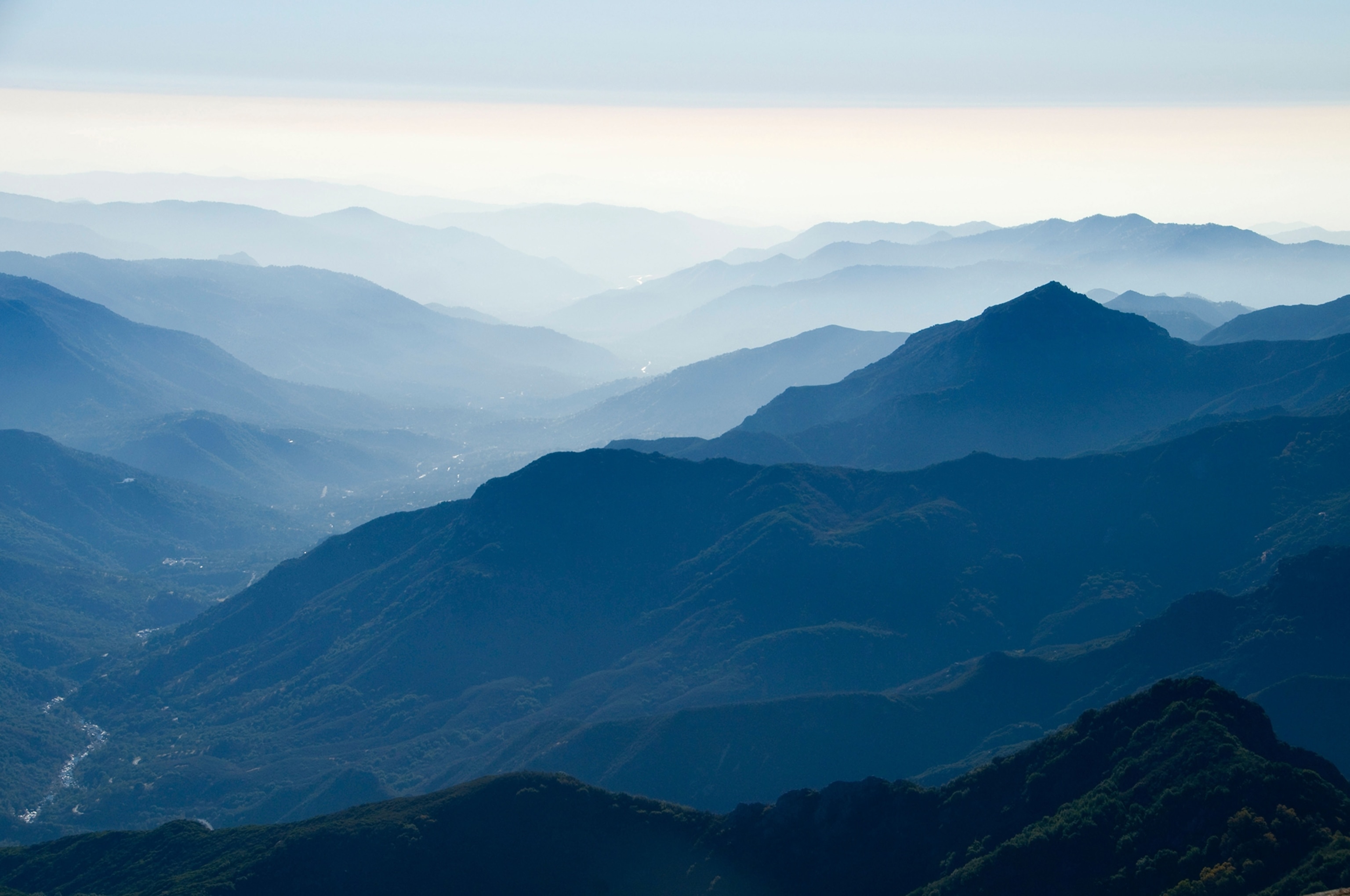
Where the Smog Ends Up: The Giant Sequoia Forest
The air in the Sierra Nevadas is getting cleaner—but the smog tide still rises every summer day.
SEQUOIA NATIONAL PARK, California—This great park in the Sierra Nevada Mountains of California attracts a million visitors a year, who come mostly in summer to see the largest trees on Earth. After Labor Day the heat and the tourists dissipate. So does a less welcome visitor: air pollution.
By a misfortune of topography, Sequoia National Park sits above an industrial-agricultural basin, the San Joaquin Valley, whose dirty, sun-baked air has nowhere to go but up. Along with its neighbor, Kings Canyon National Park, Sequoia has the worst air quality of any park in the country. In 2013 it exceeded the national health standard for ozone on 59 days, according to measurements taken at the Ash Mountain entrance station, at 1,400 feet. Up at 6,500 feet, where the giant sequoias grow, excessive levels of ozone occurred on 41 days.
On such days visitors arriving from Fresno or Los Angeles, among the most polluted cities in the nation, are greeted at the Sequoia visitor center by the same "code orange" air quality alert they left back home. Hiking or biking in parks that are almost entirely designated as wilderness, "untrammeled by man," they may find themselves wheezing or suffering chest pain. (Read "Fifty Years of Wilderness" in National Geographic magazine.)
And yet the air is much better than it used to be.
The health standard for ozone is 75 parts per billion (ppb), averaged over eight hours. Recently the staff of the U.S. Environmental Protection Agency recommended that the standard be lowered to between 60 and 70 ppb—sparking the usual heated debate in Washington between business representatives and environmentalists. The argument may seem a million miles from Sequoia-Kings Canyon, but Annie Esperanza, the air resources specialist at the parks, is cheering the regulators on.
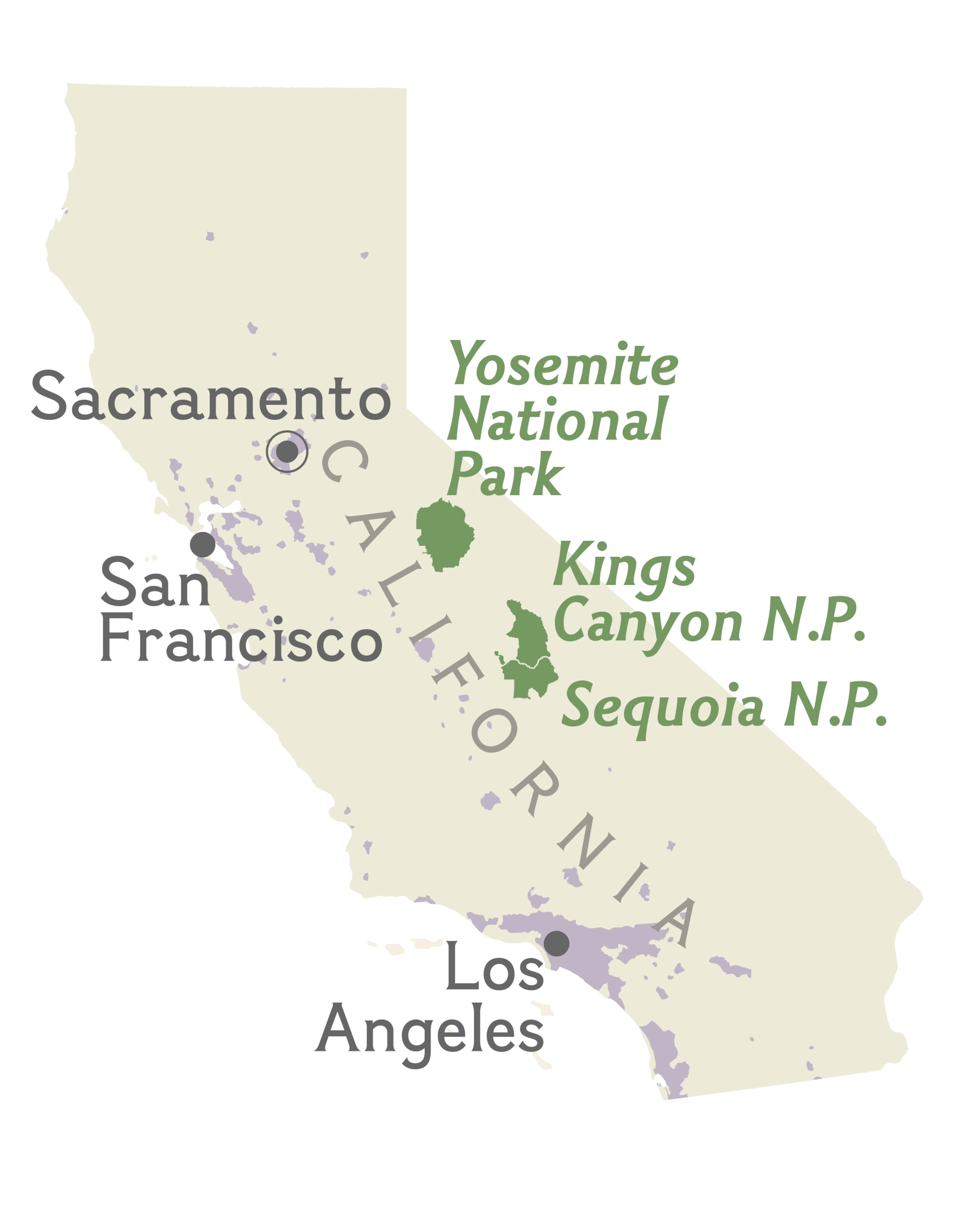
"We tell them, if they do the work, we'll see it here first," Esperanza says. "We're the canary in the coal mine."
The Rising Tide
Last month I went to see Esperanza, and it brought to mind the first time I backpacked in the park. It was the summer of 2008. Setting off early, I hiked south at about 8,000 feet in the Sierra Nevadas.
When the trail bent back to the west and a view opened up, I was astounded to see a bank of brown air rising behind me, its top sharply delineated from the clean sky above. It looked as if it were alive. Air pollution, generated thousands of feet below, was making its daily invasion of the park.
Esperanza remembers that summer; the pollution was worse than usual because it included smoke from distant forest fires. But the tide of smog returns each year to the mountains for the same basic reasons.
Prevailing west winds sweep pollutants from the San Francisco Bay area into the great Central Valley. Moving south into the San Joaquin Valley, the air blows over Fresno, Visalia, and Bakersfield; along the truck-clogged highways I-5 and Route 99; and over farmland and massive dairy operations. Blocked at the south end of the valley by the Tehachapi Mountains, the smog doubles back in a vortex, and then rises.
When it wafts among the tall conifers of the parks, it includes ozone, nitrogen oxides, volatile organic compounds, fine particulate matter, and traces of pesticides. A nasty-sounding mix, but unless there's a forest fire or a dust storm, the substance of greatest concern is ozone, an invisible gas.
Ozone molecules, which are composed of three atoms of oxygen, form from other pollutants—nitrogen oxides and various hydrocarbons—in a reaction powered by sunlight. "Ozone is unstable," Esperanza says. "It doesn't like humidity or rain. It won't form if clouds are blocking the sun."
Ozone is so unstable that at night the very nitrogen oxides that form it start to break it down, stripping off one of the oxygen atoms to create ordinary molecular oxygen (O2). Down in the valley, where traffic runs all night and the nitrogen oxide pollution is greater than in the mountains, ozone is rapidly reduced.
Up in the parks, "ironically, there's not enough nitrogen oxide," Esperanza says. "An unpolluted environment will retain its ozone longer. In the morning, the vegetation gets hammered." As plants open their stomata—microscopic pores through which they absorb carbon dioxide and emit water vapor and oxygen—ozone gets in and attacks the tissue.
Ozone Weather
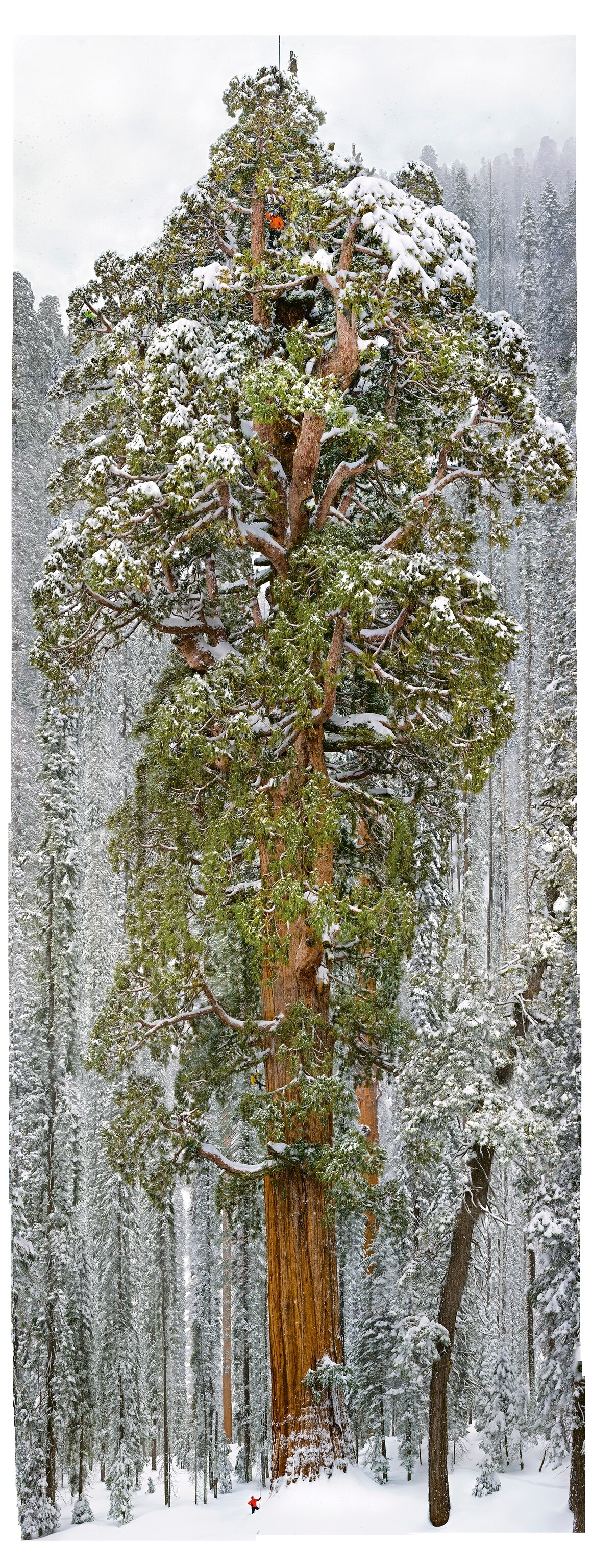
Every morning during summer Esperanza or one of her assistants issues air-quality forecasts for the lower elevations of Sequoia, around the Ash Mountain entrance, and for Giant Forest. At the Ash Mountain air-monitoring station, ozone and aerosol samplers are mounted atop a 30-foot tower behind the visitor center, on a rocky knob overlooking a steep canyon. The station looks straight down the Middle Fork of the Kaweah River at the San Joaquin Valley.
In the morning, smog creeps up the river canyons. Since the roads tend to follow the canyons too, the most frequented areas of the park are usually the most polluted. On days when conditions will be unfavorable, Esperanza distributes a warning map that paints the canyons yellow-brown, like nicotine-stained fingers sticking into a green, alpine hinterland. The trees rimming the canyons and the west-facing open ridges absorb the bulk of the pollution; ozone levels fall off sharply farther "inland."
About 5,000 feet and 17 twisting miles above the Ash Mountain station, Esperanza takes me to her second air-monitoring station, the Lower Kaweah site. We're in a forest of mixed conifers, featuring incense cedar, white fir, and several species of pine—sugar, ponderosa, and Jeffrey.
Dwarfing them all, their crowns indiscernible from the ground, are the giant sequoias. The tourists streaming from the parking lots to pay court to the General Sherman tree, the world's largest tree, look like brightly colored ants beneath it. (See video: "Magnificent Giant Tree: Sequoia in a Snowstorm.")
Mature sequoias don't seem affected by ozone—"If it did hurt giant sequoias, that would be news," Esperanza says—but ozone has been shown in experiments to stunt sequoia seedlings. It does more damage to ponderosa and Jeffrey pines.
Esperanza brings over a twig of a Jeffrey pine. On the undersides of the needles are the stomata. "See how the needle is yellowish, almost translucent?" Esperanza says.
Each year as pines grow, they put out a whorl of new needles at the end of a branch. In healthy trees ten or twelve whorls represent as many years' growth, but ozone-damaged pines drop their older needles sooner, so only two or three whorls stay on the branch. "It looks like thinning hair," Esperanza says. Sequoias and cedars, by contrast, have scales shielding their stomata, which may account for their resistance.
Hazy Views
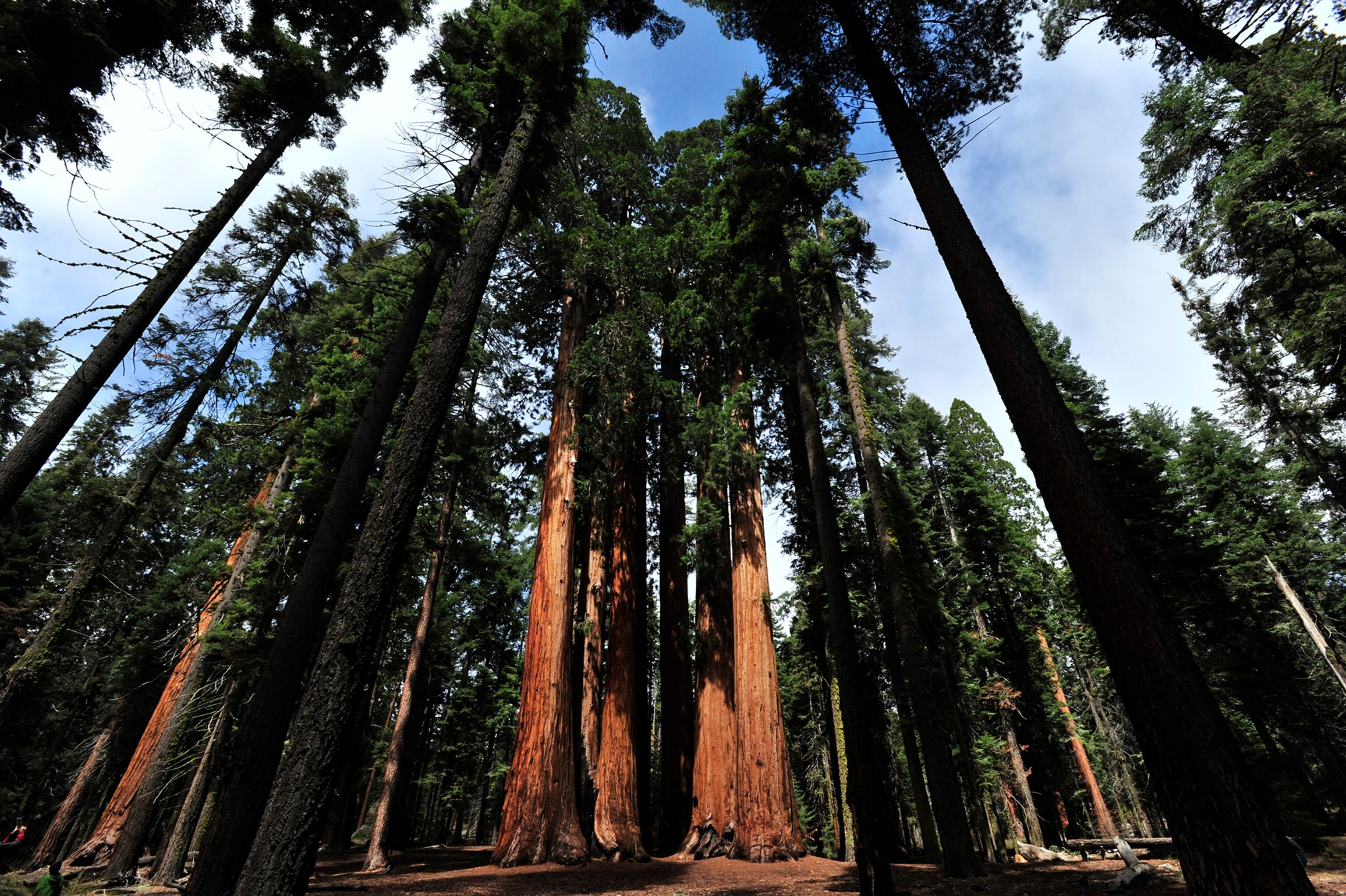
When Esperanza first came to work at the park, in 1982, the air pollution was worse than it is today and the smoggy days more numerous. The San Joaquin Valley Air Control District, the responsible agency, has been under unrelenting pressure to improve things. It has pushed diesel-engine retrofits and electric-powered lawn mowers; it has promoted carpooling and educated drivers about unnecessary idling. Last year the air in the valley was the cleanest on record for ozone and fine particulate matter.
Still, since other areas of the country have improved at the same time, the valley's best year on record was worse than anyone else's—just as Sequoia-Kings Canyon's best year on record in 2013 was worse than any other park's. Though cleaner cars are on the freeways, the total number of vehicles is increasing. Recently the air district calculated that in the course of a day the cars and trucks in the region drive 110 million miles.
As air quality has improved, the federal government has moved the goalposts. "When I started," says Esperanza, "the ozone standard was 120 parts per billion, and it was moved to 84, then 75, and now they are talking about it going lower." Though she's in favor of the lower standard, she wonders if the San Joaquin air district will ever be able comply with it. "On emissions, the low-hanging fruit has been got," she says.
The latest survey of the ponderosa and Jeffrey pines shows a slight easing of ozone injuries—either because the air is getting cleaner or because the trees, like people, are adapting to the dirty air. Inside the Lower Kaweah monitoring lab Esperanza has posted a photograph of the view on a clear day. A half dozen peaks, one as far away as the west side of the valley, are marked by their distances from Lower Kaweah.
Since the photo hangs next to a window, you can take a rough measure of the current visibility. Today it's just 26 miles, even though the air quality is rated as good. On the clearest days the visibility ought to be well over a hundred miles, says Esperanza.
Instead, the view is obscured by a haze of free-floating particles—nitrates, sulfates, dust, and smoke—that scatter what should be a crystal-clear stream of light. The haze emanates from the valley, like the ozone does, and it may be even harder to fix. California has told federal regulators that "natural conditions" won't be restored until 2096. We look down on Fry's Point, a landmark only five and half miles away. "If there's a day you can't see that," Esperanza says, "now that's a bad day."

